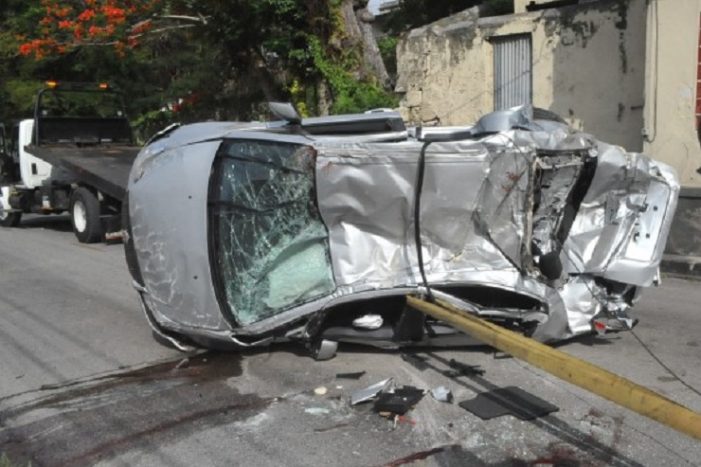GENEVA, Switzerland (CMC) — The Pan American Health Organization (PAHO) says a new report by the World Health Organization (WHO) indicates road traffic deaths in the Caribbean and other places continue to rise, with an annual 1.35 million fatalities.
On Friday, PAHO said the WHO Global status report on road safety 2018 revealed that road traffic injuries are now the leading killer of children and young people aged five to 29 years.
“These deaths are an unacceptable price to pay for mobility,” said WHO Director-General, Dr Tedros Adhanom Ghebreyesus. “There is no excuse for inaction. This is a problem with proven solutions. This report is a call for governments and partners to take much greater action to implement these measures.”
“Road safety is an issue that does not receive anywhere near the attention it deserves — and it really is one of our great opportunities to save lives around the world,” he added.
The WHO Global status report on road safety 2018 documents that, despite an increase in the overall number of deaths, the rates of death relative to the size of the world population have stabilised in recent years.
“This suggests that existing road safety efforts in some middle- and high-income countries have mitigated the situation,” PAHO said.
Michael R Bloomberg, founder and chief executive officer of Bloomberg Philanthropies and WHO Global Ambassador for Noncommunicable Diseases and Injuries, said road safety is “an issue that does not receive anywhere near the attention it deserves.
“And it really is one of our great opportunities to save lives around the world,” he said. “We know which interventions work. Strong policies and enforcement, smart road design, and powerful public awareness campaigns can save millions of lives over the coming decades.”
PAHO said the Region of the Americas, including the Caribbean, accounts for 11 per cent of global road traffic deaths at nearly 155,000 deaths per year.
The region has the second lowest road traffic fatality rate among WHO regions with a rate of 15.6 per 100,000 people, PAHO said.
It said car occupants account for 34 per cent of road traffic deaths in the region, and motorcyclists account for 23 per cent. PAHO said this is an increase of three per cent from the previous report.
PAHO said pedestrians represent 22 per cent of fatalities while cyclists represent three per cent.
A further 18 per cent of deaths are from other categories or not specified, PAHO said.
In the settings where progress has been made, PAHO said it is largely attributed to better legislation around key risks, such as speeding, drinking and driving, and failing to use seat-belts, motorcycle helmets and child restraints; safer infrastructure like sidewalks and dedicated lanes for cyclists and motorcyclists; improved vehicle standards, such as those that mandate electronic stability control and advanced braking; and enhanced post-crash care.
The report documents that these measures have contributed to reductions in road traffic deaths in 48 middle- and high-income countries.
However, PAHO said not a single low-income country has demonstrated a reduction in overall deaths, in large part because these measures are lacking.
In fact, it said the risk of a road traffic death remains three times higher in low-income countries than in high-income countries.
In the Americas, PAHO said there have been some improvements regarding institutional management.
It said at least 29 out of 35 countries have a lead agency on road safety issues, 23 countries have road safety strategies, 23 countries have strategies that are funded, and 18 have strategies with a fatality reduction target.
“However, in terms of legislation and road user behavior, much remains to be done,” PAHO said.
For example, it said nine countries have laws that meet best practice on one risk factor only, but added that no country has laws that meet best practice on five risk factors, such as speed laws, drink-driving laws, helmet laws, seat-belt laws and child restraint laws.
Regarding safe roads, PAHO said at least 26 countries have designed standards for pedestrian and cyclist safety; and 22 countries have policies and investment in urban public transport.
On post-crash care, PAHO said at least 18 countries in the region have a national single emergency number and eight countries have a trauma registry.

